This is a Takeda TR6142 (also known as Advantest R6142) programmable DC source, a great find at less than EUR 50, of course, in non working condition.
The item arrived in good shape, but unfortunately, as described – non working, display comes up but no reaction to any key press. It just won’t interact with the operator.
This 6142 is almost a cal standard type of source, 0.03% over 6 months (probably, for several years), 3 mV peak to peak noise, etc., it is also great to test semiconductors or to provide defined voltages and currents (up to 12 Volts, up to 120 mA), to devices under test, or circuits under development.
As an interface, there is a BCD input, and a IEEE-488 (GP-IB) input.
Looking inside, there is a logic board on the top side, and a shielded box with the analog circuits at the bottom. Fortunately, there is a manual with schematics available, let’s do some probing. Seems the CPU is waiting for something – it is not executing any commands, when I look at the data bus with a scope probe. What could it be? Checking all the inputs to the CPU – there are not many, mostly, the GP-IB, the BCD interface, and, the keyboard. The keyboard is a matrix design.
Turns out, one key is stuck! These buttons are some kind of pressure sensitive switch – they don’t have a “click” or other clear action when you push them. It could be just dirt or age that gives low resistance. Unfortunately, these switches are difficult to disassemble, so I soaked the switch in some isopropanol. Another thing that helps is to resolder the keys really hot, this will melt away the dirt layer (which may be just some organic residue or moisture) inside of the switch, and also cure any solder joint issues with the keys, although I didn’t find any – but the pins are somewhat oxidized.
That’s they keyboard assembly, cleaned and resoldered.
After this fix – all is working fine, and the unit is responding to entries.
A quick look at the analog assembly (to check for dirt or other signs of aging) – no dirt found.
All is built with really high precision metal encapsulated resistors, teflon standoffs, and DC filtering.
The main reference is a LM399, (0.5 ppm/K temperature coefficient, low noise, and, typically, 4 ppm drift per year).
A quick test – with a simple instrument – it is working just fine (also tested the current mode).
Now, another topic – I am currently working on this instrument in Japan, 100 VAC mains voltage, but later would like to operate it in Germany, 230 VAC.
A quick look at the schematic – not good! There seem to be 100 V and 200 V coils on the transformer, but no provisions for 230 VAC! That’s not good.
Let’s check the actual voltages and ratios – there is a solder terminal inside the unit.
As it turns out, the schematic is either incorrect or outdated, the coils on the transformer are 0-100-120 VAC, and 0-100-120 VAC. So we can easily configure it for 220 or 240 VAC, yet, not for 230 VAC. The 6142 is rated for a +-10% mains voltage tolerance, same as the tolerance limit in Europe, for the 230 V (although it rarely deviates from 230 Volts by more than 2 Volts at my place in Germany, in the middle of a city with lots of industries and arm-thick power cable going into the building).
A calculation shows the ranges – it will definitely be better to configure it for 240 Volts, rather than 220 Volts, to avoid a dangerous over-voltage condition.
But what are calculations, if you can do measurements (with the unit loaded). Seems there is good margin in the DC voltage design, and the voltages regulators are standard 78xx types, with maximum 2 Volts dropout voltage – and with the voltages measured, even in case of 230 VAC-10%, we will still have a working unit, and stable DC rails. So, once back in Germany, we will just change the solder bridges in the voltage selector, and all will be ready for 230 VAC mains.

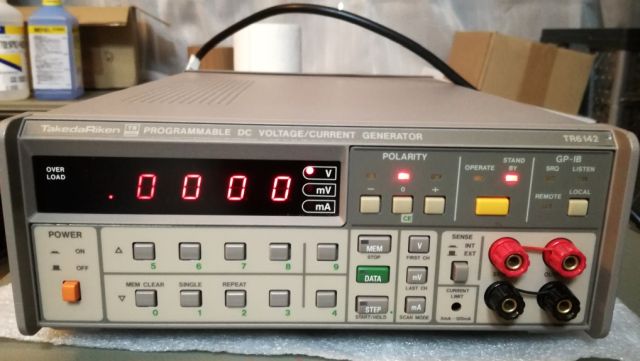

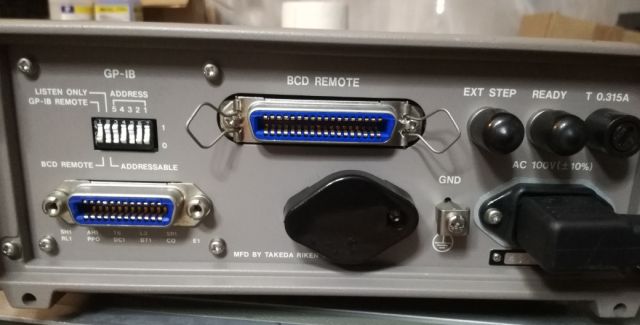
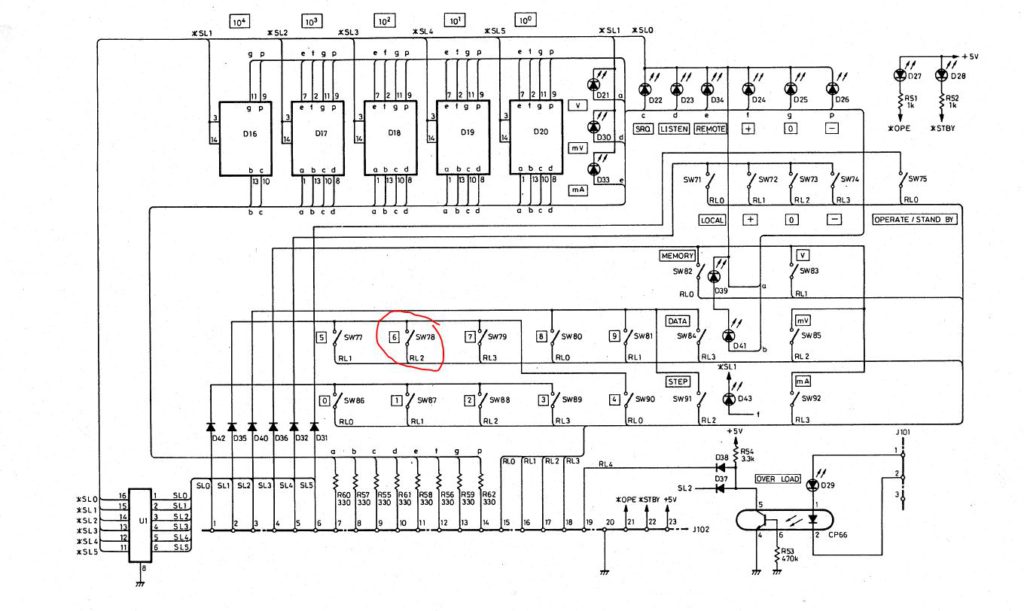
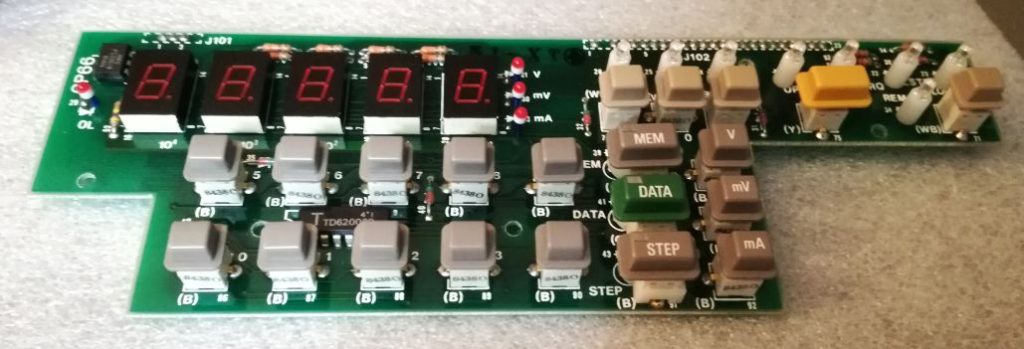
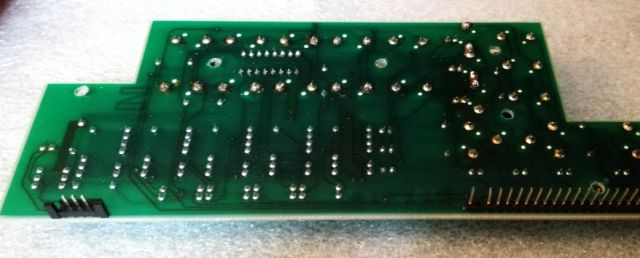

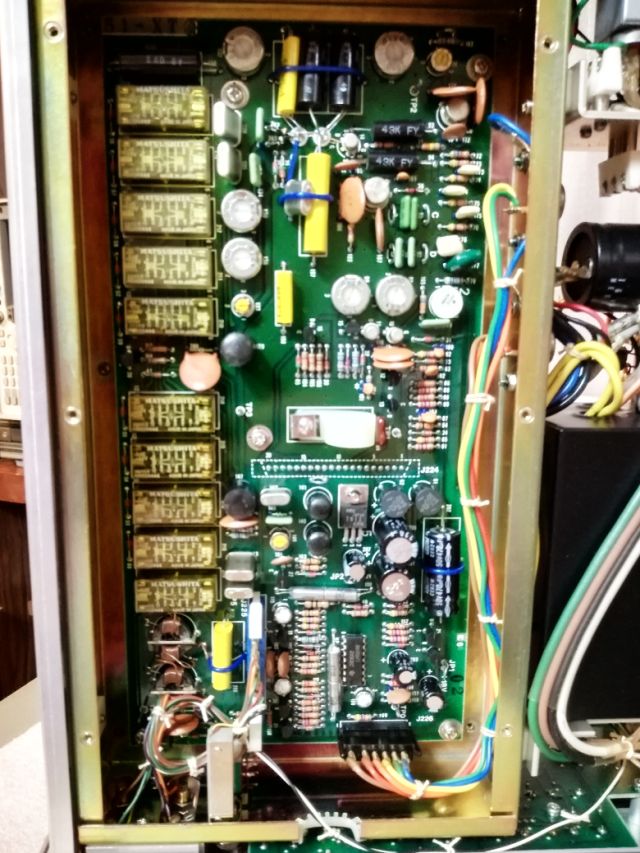




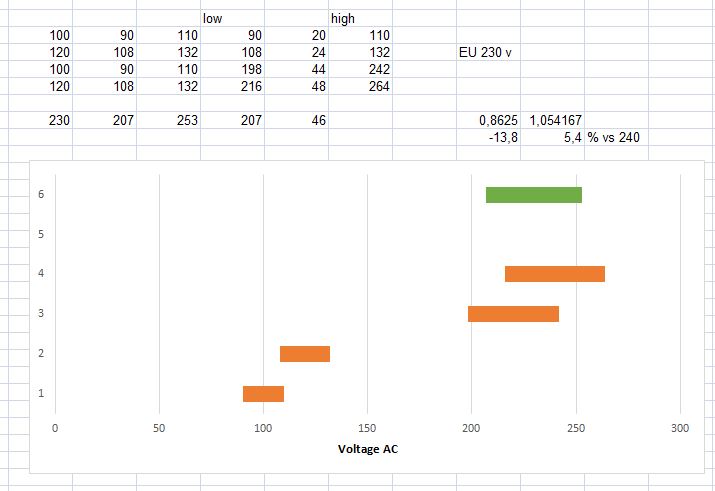

Hi Simon.
Nice article.
Do You have the manual/schematics as a pdf-file ?
if so, then I would be really happy to get a copy.
Best Regards
Hans, Denmark
Sure, I will send it to you. Simon
good read. would love to have the user manual of this model.
Sure, I will send you the link.
Simon
Hello, Simon!
Good works!
I’ll get my TR6142 soon and your experience will be very useful to me!
Can you send me the link too?
Hello Simon,
Great stuff, well done.
Hey do you mind sending me manual/schematics as a pdf-file as well.
Thanks Stephen
could you please send me the service manual/schematics of this device?
Sure!
Hi Simon, thank you for sharing! Nice work! I’ve also bought 3 x TR6142, along with some other non working Advantest/ADCMT gear.
Would you mind sharing the file with the schematics? Thank you so much!
Sure, I will send it to you.
Hello Simon!
Ive also got advantest branded tr6142 advertised as broken/fault unit without mains tap switch. could you please send me schematic as well?
Can I put my hand up to get the schematics etc sent to me too please?
sure, you will receive it shortly.